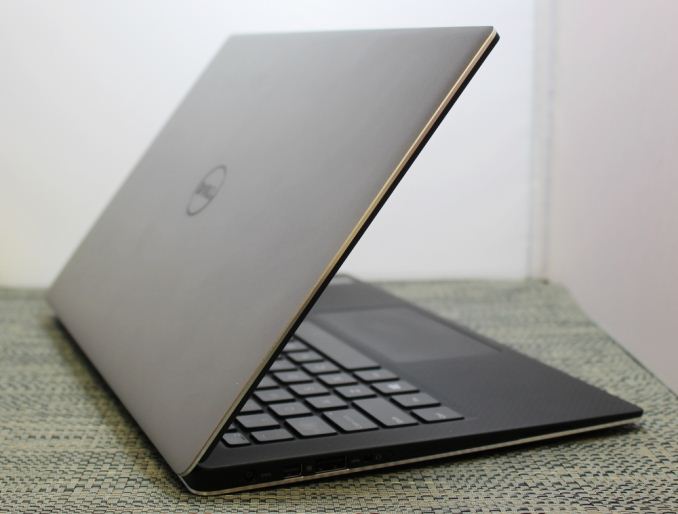Dell XPS 13 Review
by Brett Howse on February 19, 2015 9:00 AM EST- Posted in
- Laptops
- Dell
- Ultrabook
- Broadwell-U
- XPS 13
Final Words
The XPS 13 is a bold move from Dell. High quality build materials, a good keyboard, a good trackpad, and the latest generation Intel Ultrabook processor all inside a chassis with a display that is two sizes too big stuffed into it. Combine that with a 1920x1080 IPS display on the base model, as well as solid state storage as the only option, and you would expect the starting price to be north of $1000. But it is not. The base price, with a Core i3, is just under $800.
The XPS 13 also carries with it amazing battery life, especially on the lower resolution base model. Broadwell-U is part of that, but the display is also a big part of that score, especially on the light battery life test, and Dell would have had to work on the entire package to achieve this kind of battery life result. Any one choice that was a power hog would have dragged the scores down.
Of course no device is perfect and the XPS 13 certainly has some niggling issues which will hopefully be resolved in revisions or updates. The auto-brightness issue is one that they will hopefully address soon. I have no issue with auto-brightness in most cases, but there needs to a way to disable it. Not only can it be frustrating at times when the display is constantly changing brightness, especially in a dim room, but it makes display calibration impossible. If the touch version also had the Yoga style display hinge, it would also increase the capabilities of this device, although that hinge style would be wasted on the non-touch model.
The display is really the one standout feature though. Finally, someone has reduced the bezel size on a laptop. If you are not a fan of smaller laptops, this may not be for you though, since really, it is closer to a typical 11.6 inch model than a 13.3 inch. It would be unbelievable if all laptops were to follow this design pattern, but for now we can hope that at least the premium devices will do so. Dell has opened the door and shown us what is possible, and it looks awesome. The one loser in this scenario is the webcam position, which at the lower left side of the screen is far from ideal. If you are a heavy user of the webcam, this could pose an issue.
Comparing the two models is difficult. On one hand, the FHD model starts at $800 and with the Core i5, bumps up to $900. That is a great starting price for a well-built device like this one, even though the base model has just 4GB of memory. Moving to 8GB means jumping up to $1000. However the move to the excellent high resolution display is yet another $300 on top of that, bringing the least expensive model with touch in at $1300. While I do love the display, and I prefer touch on notebooks, $1300 is getting pretty expensive compared to the original price, and you lose a lot of battery life as well.
Really, it is a great choice to have to make, because neither option is the wrong one. We often lament the lack of options on other laptops, but here Dell let's users decide what they value most: resolution and display quality, or battery life. The only real issue is that you can't get touch with FHD, and you can't get 512GB SSD with the FHD either.
The Dell XPS 13 ends up being responsive, small, light, and well built. Dell has crafted what I am sure most people were hoping for when the original Ultrabook specification was announced. On top of that, they have designed a laptop with class-leading battery life, and plenty of choice to let people buy as little or as much as they need. Considering the competition, this is clearly the Ultrabook of the Broadwell-U generation to beat, and from what we saw at CES it may very well go unchallenged for the remainder of the year.












201 Comments
View All Comments
ThomasDahl - Friday, December 25, 2015 - link
I just received a brand new skylake 16Gb/1TB i7 XPS13 and I am getting 4-5 hours of battery life while only browsing and emailing at 50% screen brightness. Is this the advertised "Up to 18 hours of battery life standard. Add an additional 10 hours with the optional Dell Power Companion."? - straight from the Dell web site specific for this model.Is this the same as the advertised 50 GBit internet I signed up for and where I only received 14GBit? Or is there something I can do about this?
Why do I feel ripped off?
Regards
Thomas Dahl
thomas.dahl@web.de